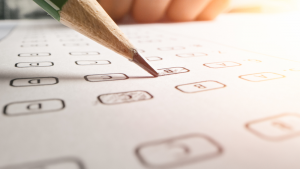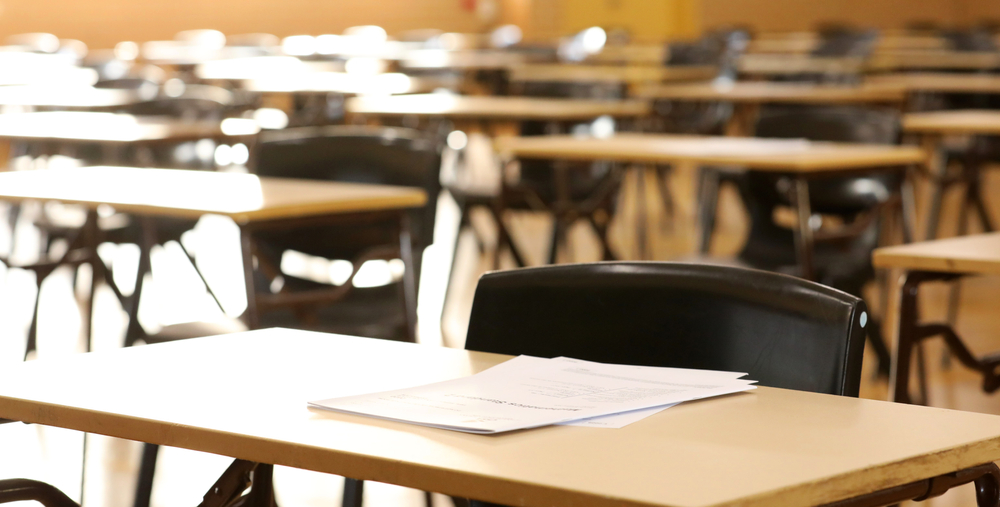
10 Terrific Test-Taking Tips for a High SAT Score
The Scholastic Assessment Test (SAT) is a popular, paper-based entrance exam administered by the College Board since 1926. According to the U.S. News & World Report, around 2.2 million high school students take the SAT test each year. The three-hour exam evaluates college readiness with multiple-choice questions in two sections: critical reading and math. The SAT also has an optional, 50-minute essay section to judge writing skills. High school juniors and seniors can register for SAT test sessions seven times yearly. For 2019-20, the SAT cost ranged from $49.50 to $64.50 based on the chosen format.
Are you planning to take the SAT test? If so, it’s normal to feel anxious. There’s so much pressure to achieve a high mark on the 400-1600 scoring scale. SAT scores are factored into the admission process at most four-year U.S. colleges. The College Board has over 6,000 member institutions globally that accept SAT scores. Superior SAT scores are a necessity to get into top universities like Harvard, Princeton, Columbia, Stanford, and Northwestern. Studying at least one month before the SAT exam is key. The SAT isn’t a test to underestimate or cram for overnight. Here are 10 terrific test-taking tips for achieving a high SAT score.
-
Take Free SAT Practice Tests Online
Finding online SAT practice tests is the best way to learn the lay of the land. Practice tests make you aware of the types of reading and math questions asked. The College Board recommends creating a free Khan Academy account for SAT preparation. Always use a timer when taking SAT practice tests. Budgeting the right amount of time for each section, such as 80 minutes for math, is important. Online mock exams will teach you deductive reasoning and time management skills.
-
Identify Your Test-Taking Weaknesses
Everyone has their unique weaknesses when taking exams. Don’t feel ashamed when you mess up. Use your mistakes as teachable moments to better your test-taking ability. After you’ve graded a few SAT practice tests, take stock of your frequent errors. Perhaps you struggle with algebra questions. Maybe you’re skimming the reading passages too fast. Whatever the case, hone in on your weak spots. Brainstorm fixes, such as rereading textbook chapters on stumbling subjects.
-
Master the Art of Educated Guessing
It’s highly unlikely that you’ll know every SAT answer. Sometimes, you’ll simply need to take a stab at it. The College Board doesn’t penalize SAT takers for guessing. There’s no sense in leaving the harder questions blank. You have a 25 percent chance of picking the right response. Your odds increase if you’re able to eliminate one or two wrong answers. Educated guessing is like requesting the 50-50 lifeline on Who Wants to Be a Millionaire? Using the process of elimination can help you guess correctly.
-
Have SAT Vocabulary Flashcards Handy
The SAT is notorious for using big words to test students’ vocabularies. Nobody knows which elongated words will be pulled from the dictionary for the SAT reading section. However, you can prepare by studying frequently used SAT words. Print out online vocabulary lists that define these supersized terms, such as “surreptitious” and “aberration.” Make flashcards on index cards to test yourself during free periods. Download mobile vocabulary apps and games to practice on the go.
-
Exercise Your Mental Math Muscles
Relying on a calculator for every SAT math question is too time-consuming. Plus, there’s one SAT subsection where calculators aren’t allowed. Doing basic math calculations in your head will save you time and work. Leave the paper and pencil for figuring out tougher formulas. Practice doing simple arithmetic like 48 + 8 mentally. Run drills with addition, subtraction, multiplication, and division problems. Learn mental math tricks, such as rounding up to 10 when multiplying by nine.
-
Highlight Key Points in the SAT Test Booklet
The College Board forbids the use of highlighters during the SAT test. Nonetheless, your shiny yellow #2 pencil works just as well. Use your pencil to mark the important points of wordy, convoluted SAT questions. Underline parts of the directions that signal what you must do. Circle meaningful parts of reading passages for reference later. Make marks on diagrams, charts, or graphs for math questions. Highlighting relevant info will point you toward the right answers for high SAT scores.
-
Create a Clear SAT Essay Outline
Have you decided to take the SAT essay section? Then, you’ll be given a brief nonfiction passage and asked to explain the author’s argument. Avoid jumping right to the writing process. Devote 10-15 minutes of the 50-minute session to outlining a cohesive essay. Outlines prevent you from rambling, skipping around, and going off-topic. Map out a strong essay from the introduction to the conclusion. Always link back to the passage with quoted facts. Also, budget enough time for proofreading and making edits.
-
Brush Up on English Grammar Rules
High SAT scores require a solid understanding of proper English grammar. Nearly 50 percent of the reading section deals with grammatical rules. SAT essays riddled with grammar mistakes won’t perform well either. Ensure you know the right punctuation usage and sentence structure. Refresh your memory with online grammar quizzes and games. Review free internet resources, such as the Purdue Online Writing Lab and Grammar Monster. Editing software like Grammarly can also help check your practice SAT essays.
-
Go With Your Gut Instinct
SAT takers tend to overthink questions and second-guess their answers. However, your initial inkling is usually correct. Listen to your gut instinct. Be confident in your knowledge and abilities. Stick with your first responses unless you’re 100 percent positive you messed up. Once you mark your answer, move to the next question without looking back. Mulling over your answers will waste precious minutes. Repeatedly changing your mind could hurt your answer sheet too. Stray erasure marks may throw the scoring machine off.
-
Arrive at the SAT Center Ready and Rested
Once your SAT test day rolls around, it’s time to stop studying. Last-minute studying will only exhaust your mind. Have faith in your many hours of practice. Use the night before and the day of your SAT test to decompress. Get energized with some mild to moderate physical exercise. Whether sketching, swimming, or singing, do your favorite form of stress relief. Feed your stomach and brain healthy, balanced meals. Head to bed early for at least eight solid hours of sleep. Pack your bag with pencils, a charged calculator, a photo ID, and snacks too.
Are you unhappy with your first SAT score? Don’t panic, because retakes are permitted. In 2018, the College Board reported that 63 percent of second-time SAT takers earned a better score. Most students take the SAT exam at least twice to reach their targeted score. Colleges will only weigh your best composite SAT score. Admission committees won’t penalize you for having a less-than-stellar first showing. Use the above 10 terrific test-taking tips to boost your chances of improvement and a high SAT score.
About The Main Line Tutor
With over 30 years of experience tutoring high school and college students our tutors specialize in mathematics and general chemistry. Our founder, Dr. Chesloff, holds a Doctorate in Higher Science Education and has developed an education curriculum that engages the student and enhances their learning and thought process to help raise their scores and improve performance.
We offer nationwide tutoring via video teleconference in PSAT/SAT preparation (math, critical reading, writing), ACT test preparation (Get step by step instructions, mock tests and more so you know exactly what to expect with the real thing), chemistry (General Chemistry (including AP), Biochemistry, Organic Chemistry), algebra I/II, geometry, and trigonometry.
Our Mission is to target the specific needs of our students, college and high school, particularly in the area of standardized test preparation.
Our Tutoring allows for flexible hours 7 days a week nationwide via videoconference.
The Main Line Tutor
We Raise Score & Improve Performance
www.themainlinetutor.com
Tel: (610) 324-8359
e-mail: drchesloff@themainlinetutor.com


